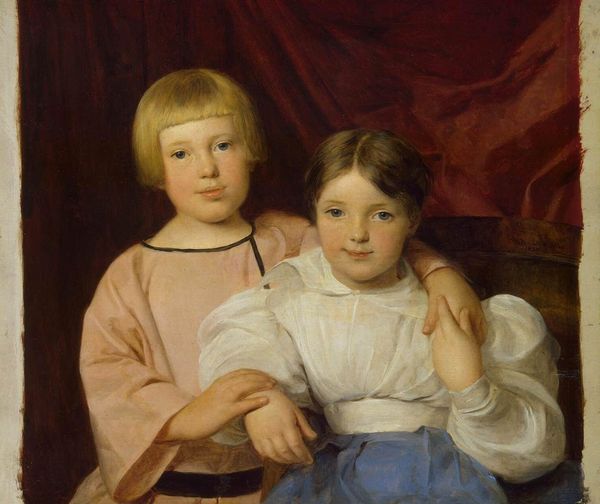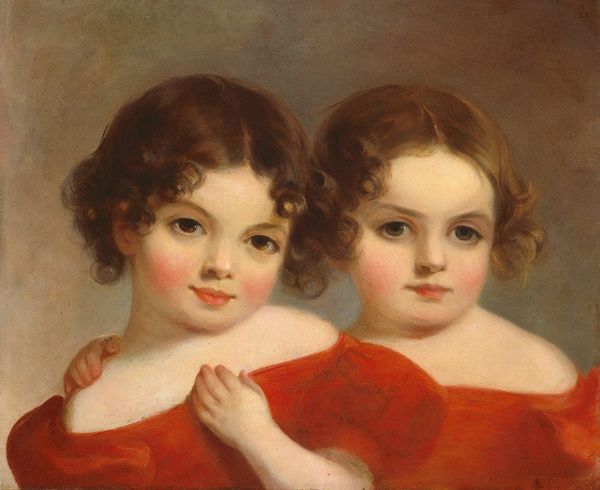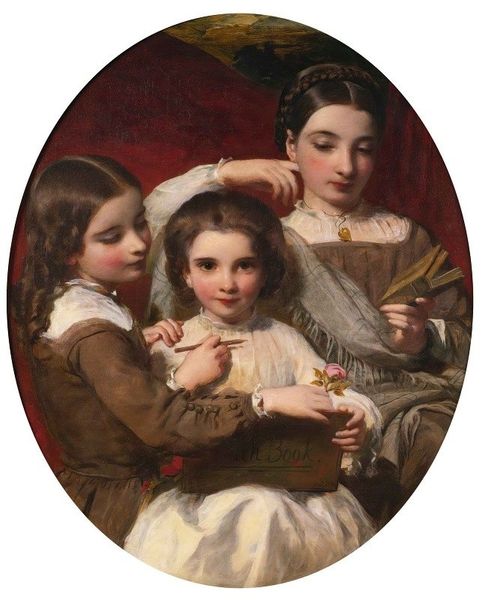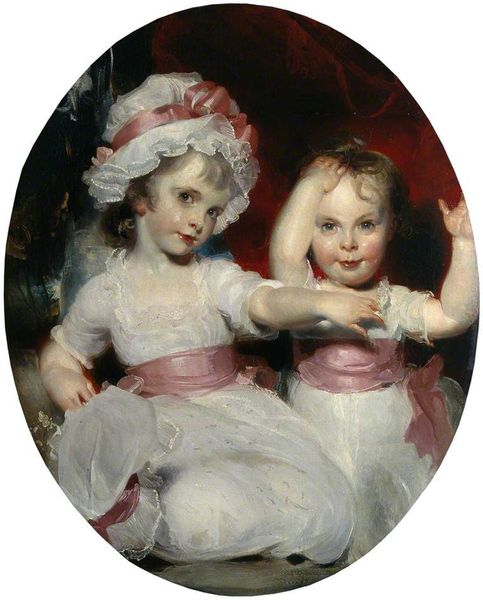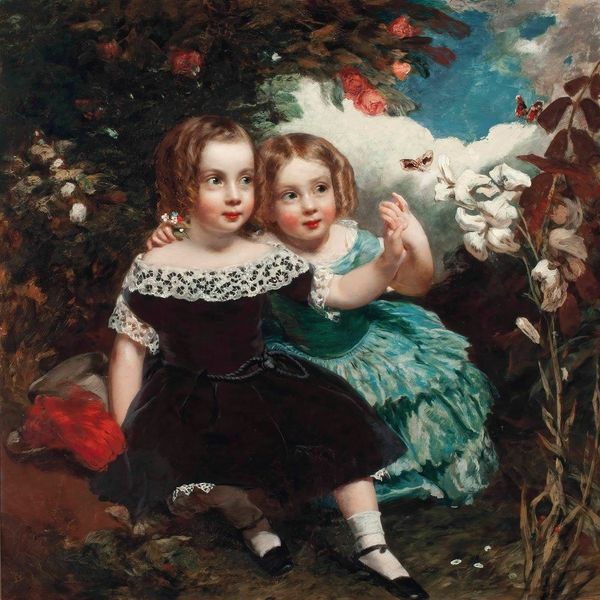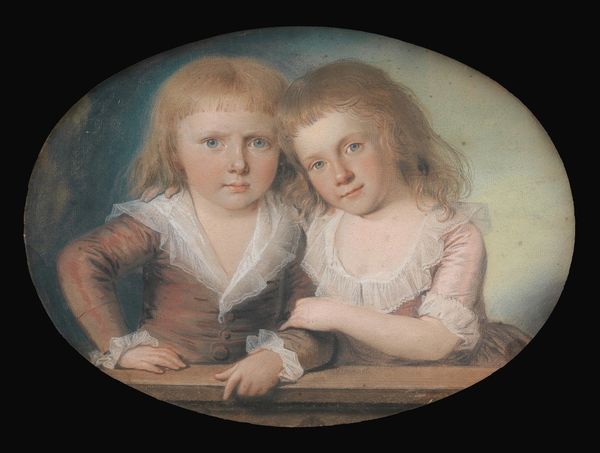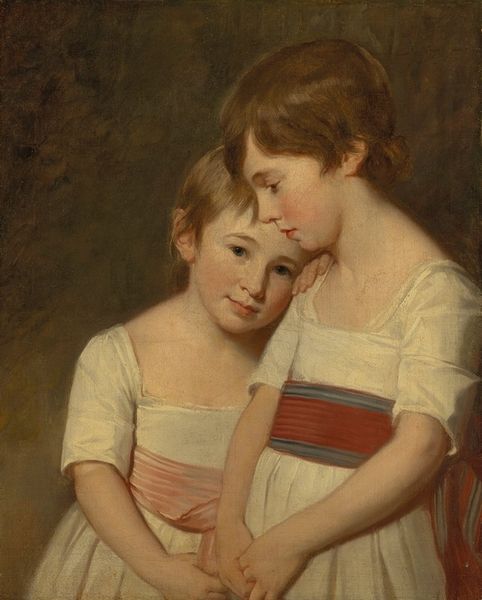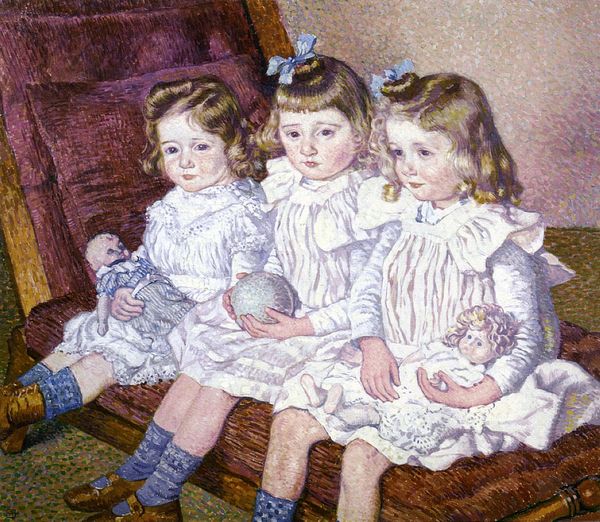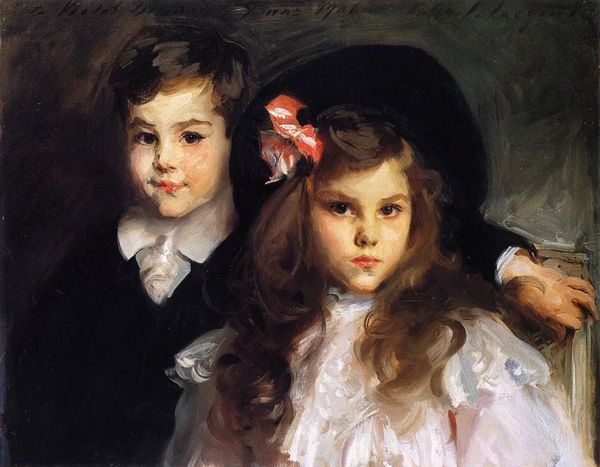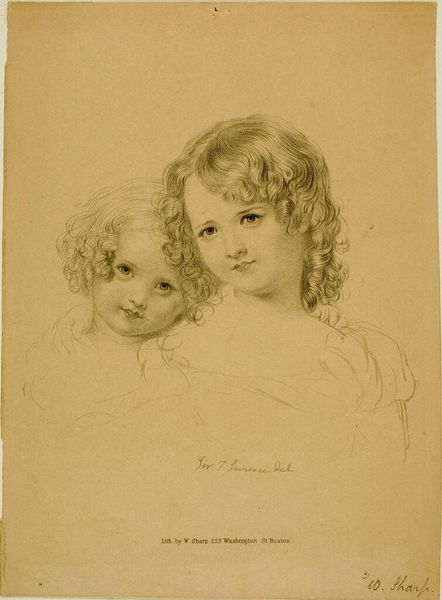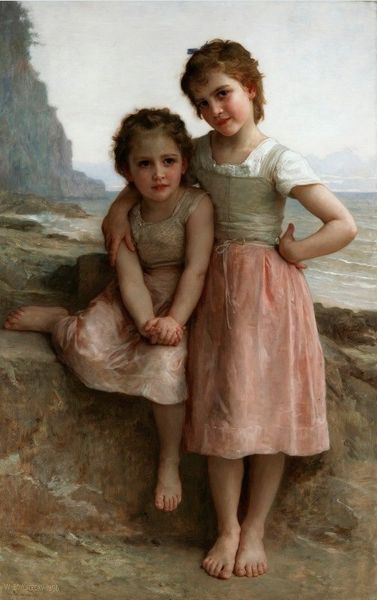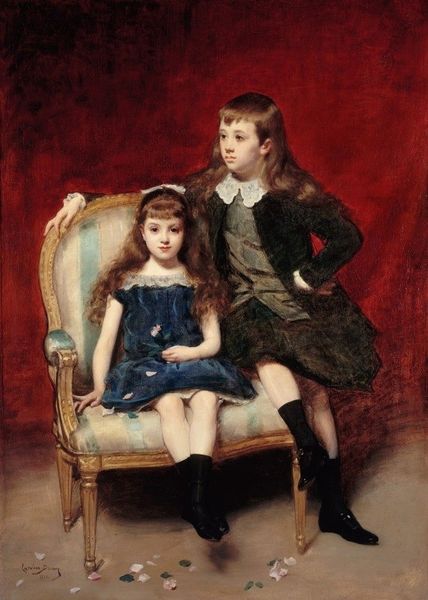
painting, oil-paint
#
portrait
#
painting
#
oil-paint
#
figuration
#
child
#
group-portraits
#
romanticism
#
realism
Copyright: Public domain
Curator: Welcome. Here we have "Misses Agnes and Margaret Perigal" by James Archer. It's an oil painting, though the specific date of its creation remains, interestingly, unconfirmed. Editor: Those gazes! Direct, a touch melancholic, almost like they hold the secrets of a very grown-up world within those big, innocent eyes. The crimson background really amplifies that feeling, doesn't it? Curator: Indeed. Child portraiture, particularly in the Romantic and Realist movements, became a powerful tool. It reflected evolving attitudes toward childhood, not merely as miniature adults but as individuals with their own emotional landscapes and social standing. This work is a superb example. Editor: Absolutely. I wonder, though, what it felt like to be dressed so formally, stiff collars and all, just to stand there? There’s a real tension between the studied pose and what I imagine would be the natural fidgetiness of childhood. You can almost feel them holding still for the artist, knowing the pose and stillness equals reward in the end! Curator: And, of course, group portraits of children were often commissioned by families to showcase status, legacy and solidify familial bonds—powerful cultural and historical markers, displayed for visitors. Each carefully rendered detail broadcasts a certain social narrative. Look at the slight differences in their attire, or in their positioning—the younger sister slightly behind the elder. Editor: The lighting too—notice how Archer uses soft light to highlight the girls' faces. It creates an ethereal quality, almost elevating them, even while rooting them in the earthy tones of their dresses and that ever-present crimson backdrop. Almost sculptural, don't you think? It is as if Archer has painted marble! Curator: Undoubtedly. This attention to lighting serves both aesthetic and symbolic functions, underscoring prevailing societal notions of youthful innocence and virtue during that time. And how the art world both promoted and enforced these views, especially within portraiture. Editor: Looking at their expressions again, I find a kind of resilience there. Despite whatever expectations were placed upon them, they have an interior life which seems impenetrable to the viewer! Makes me feel humbled, somehow. Curator: A humbling image indeed; through its technical skill and social reflection, it challenges how we view historical and artistic legacies. Editor: Very insightful. It invites me to revisit some notions of how we all perform when we are perceived by the gazes of others.
Comments
No comments
Be the first to comment and join the conversation on the ultimate creative platform.
